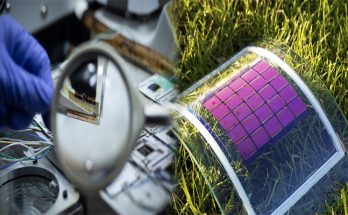Solar energy is becoming an increasingly popular renewable energy source due to its environmental benefits and cost-effectiveness. To further enhance the efficiency and performance of solar cells, scientists and researchers are turning to nanotechnology. This article will delve into the integration of nanotechnology in next-generation solar cell development and its potential impact on the renewable energy industry.
What is Nanotechnology?
Nanotechnology involves manipulating matter on a molecular or atomic scale to create new materials and devices with unique properties. At the nanoscale, materials exhibit different properties than their bulk counterparts, making them ideal for improving energy conversion and storage.
Nanotechnology in Solar Cells
Nanotechnology offers several advantages for solar cell development, including:
1. Enhanced Light Absorption
By incorporating nanomaterials such as quantum dots or nanowires into solar cells, the light absorption can be improved. These nanomaterials can capture a broader range of the solar spectrum, including infrared or ultraviolet light, which traditional solar cells cannot effectively utilize. This enables the next-gen solar cells to generate more electricity from different light wavelengths.
2. Increased Surface Area
Nanostructures provide a larger surface area, which can significantly enhance the efficiency of solar cells. By incorporating nanomaterials with high surface-to-volume ratios, such as nanotubes or nanoparticles, the active area for light absorption and electron transport is increased, leading to improved energy conversion rates.
3. Improved Charge Separation and Transport
Efficient charge separation and transport are crucial in solar cell performance. Nanotechnology can enhance these processes by creating interfaces or nanostructured layers that efficiently separate and transport generated charges to the electrodes. This reduces charge recombination and enhances the overall solar cell efficiency.
4. Flexible and Transparent Solar Cells
Nanotechnology enables the development of flexible and transparent solar cells. By utilizing transparent conductive materials at the nanoscale, solar cells can be integrated into various surfaces, such as windows or mobile devices, without compromising their functionality. This opens up new possibilities for integrating solar energy capture into everyday objects and architecture.
5. Cost Reduction and Scalability
Nanotechnology offers the potential for cost reduction in solar cell manufacturing. Nanostructured materials can be synthesized using scalable and cost-effective processes, such as solution-based or printing techniques. This could make solar cell production more affordable and accessible, driving wider adoption of solar energy.
Challenges and Future Outlook
While the integration of nanotechnology in solar cells shows great promise, several challenges need to be addressed. These include scalability of production, long-term stability of nanomaterials, and the development of efficient manufacturing processes. Additionally, there are regulatory and environmental concerns associated with the potential release of nanomaterials into the environment.
Looking ahead, continued research and development in nanotechnology will likely lead to further breakthroughs in solar cell technology. Advances in nanomaterial synthesis, device engineering, and manufacturing techniques will pave the way for the commercialization of next-generation solar cells with higher efficiency, flexibility, and affordability.
Nanotechnology offers immense potential for revolutionizing solar cell development. By leveraging the unique properties of nanomaterials, scientists and engineers can enhance light absorption, increase surface area, improve charge separation and transport, and develop flexible and transparent solar cells. Overcoming challenges and refining manufacturing processes will pave the way for the widespread adoption of next-gen solar cells, contributing to a greener and more sustainable future powered by renewable energy.





